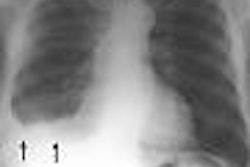Dear Molecular Imaging Insider,
The Pointer Sisters extolled the virtues of a slow hand in one of their early '80s hit songs, and 20 years later research is beginning to demonstrate that slower may also be better for some types of PET imaging studies.
Not every PET study may benefit from using the standard imaging protocol acquisition time of 30-60 minutes after the administration of the radiotracer 18F-FDG. For example, determining high-grade gliomas from gray-matter structures has been problematic for clinicians because of the brain's avidity for the radiotracer.
According to a research group from the University of Washington School of Medicine in Seattle, extending the interval between FDG administration and PET data acquisition improves the delineation of some types of gliomas from gray matter.
The researchers extended the acquisition time by nearly 500 minutes in some of the patients in their study, and found that tumor-to-gray-matter delineation became much more prominent at the later time point.
As a Molecular Imaging Insider subscriber, you have access to this story before it’s published for the rest of our AuntMinnie.com members. To read more about taking the slow road in FDG-PET brain imaging, click here.
Looking for a great online resource for information on PET? Then try our online e-book Nuclear Medicine on the Internet, authored by Dr. Scott Williams of Advanced Radiology Consultants in Bridgeport, CT. Dr. Williams provides monthly updates on the most current techniques and research in molecular imaging and nuclear medicine. You can check out his latest work here.




















